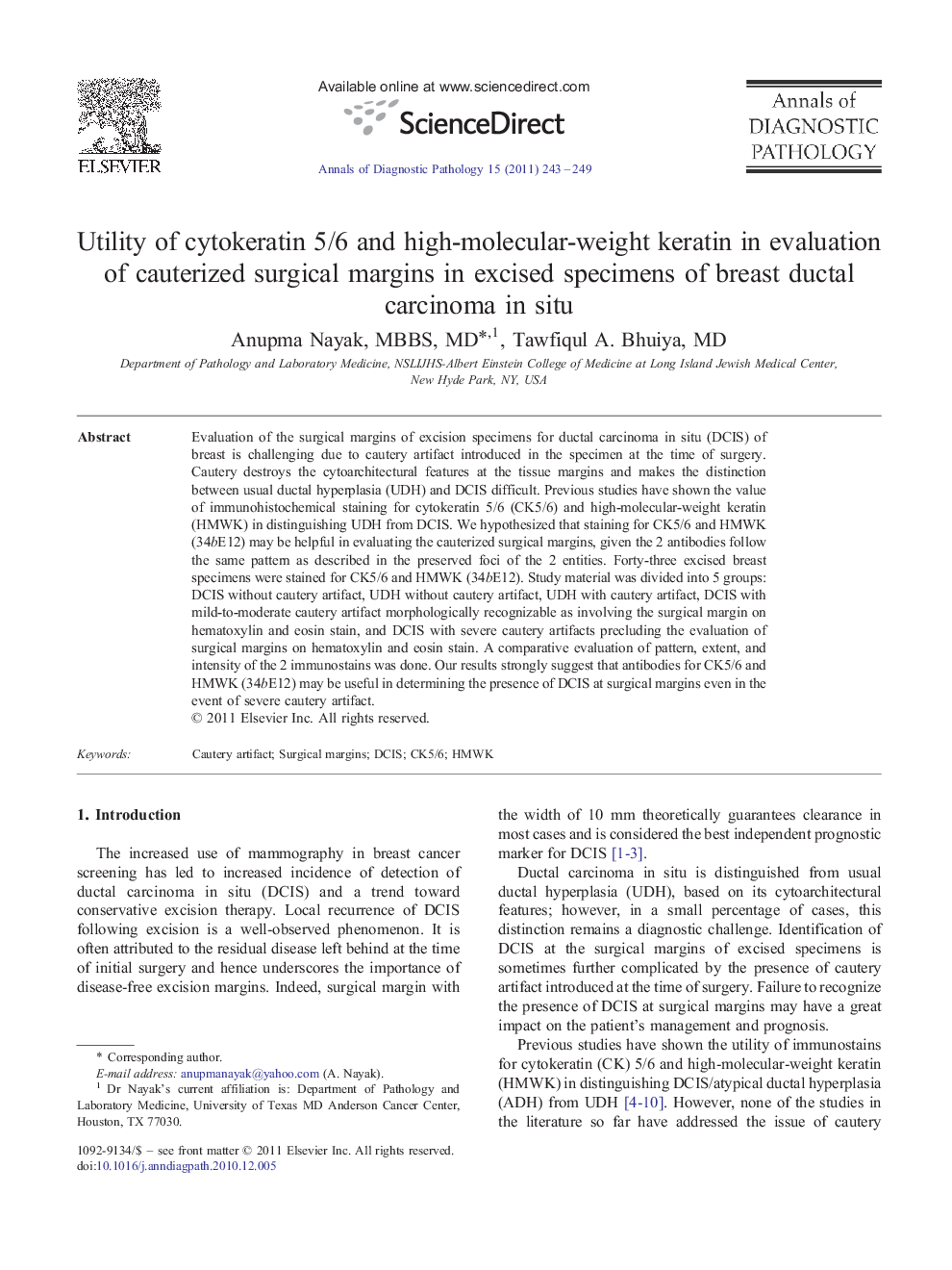| Article ID | Journal | Published Year | Pages | File Type |
|---|---|---|---|---|
| 4130178 | Annals of Diagnostic Pathology | 2011 | 7 Pages |
Evaluation of the surgical margins of excision specimens for ductal carcinoma in situ (DCIS) of breast is challenging due to cautery artifact introduced in the specimen at the time of surgery. Cautery destroys the cytoarchitectural features at the tissue margins and makes the distinction between usual ductal hyperplasia (UDH) and DCIS difficult. Previous studies have shown the value of immunohistochemical staining for cytokeratin 5/6 (CK5/6) and high-molecular-weight keratin (HMWK) in distinguishing UDH from DCIS. We hypothesized that staining for CK5/6 and HMWK (34bE12) may be helpful in evaluating the cauterized surgical margins, given the 2 antibodies follow the same pattern as described in the preserved foci of the 2 entities. Forty-three excised breast specimens were stained for CK5/6 and HMWK (34bE12). Study material was divided into 5 groups: DCIS without cautery artifact, UDH without cautery artifact, UDH with cautery artifact, DCIS with mild-to-moderate cautery artifact morphologically recognizable as involving the surgical margin on hematoxylin and eosin stain, and DCIS with severe cautery artifacts precluding the evaluation of surgical margins on hematoxylin and eosin stain. A comparative evaluation of pattern, extent, and intensity of the 2 immunostains was done. Our results strongly suggest that antibodies for CK5/6 and HMWK (34bE12) may be useful in determining the presence of DCIS at surgical margins even in the event of severe cautery artifact.
